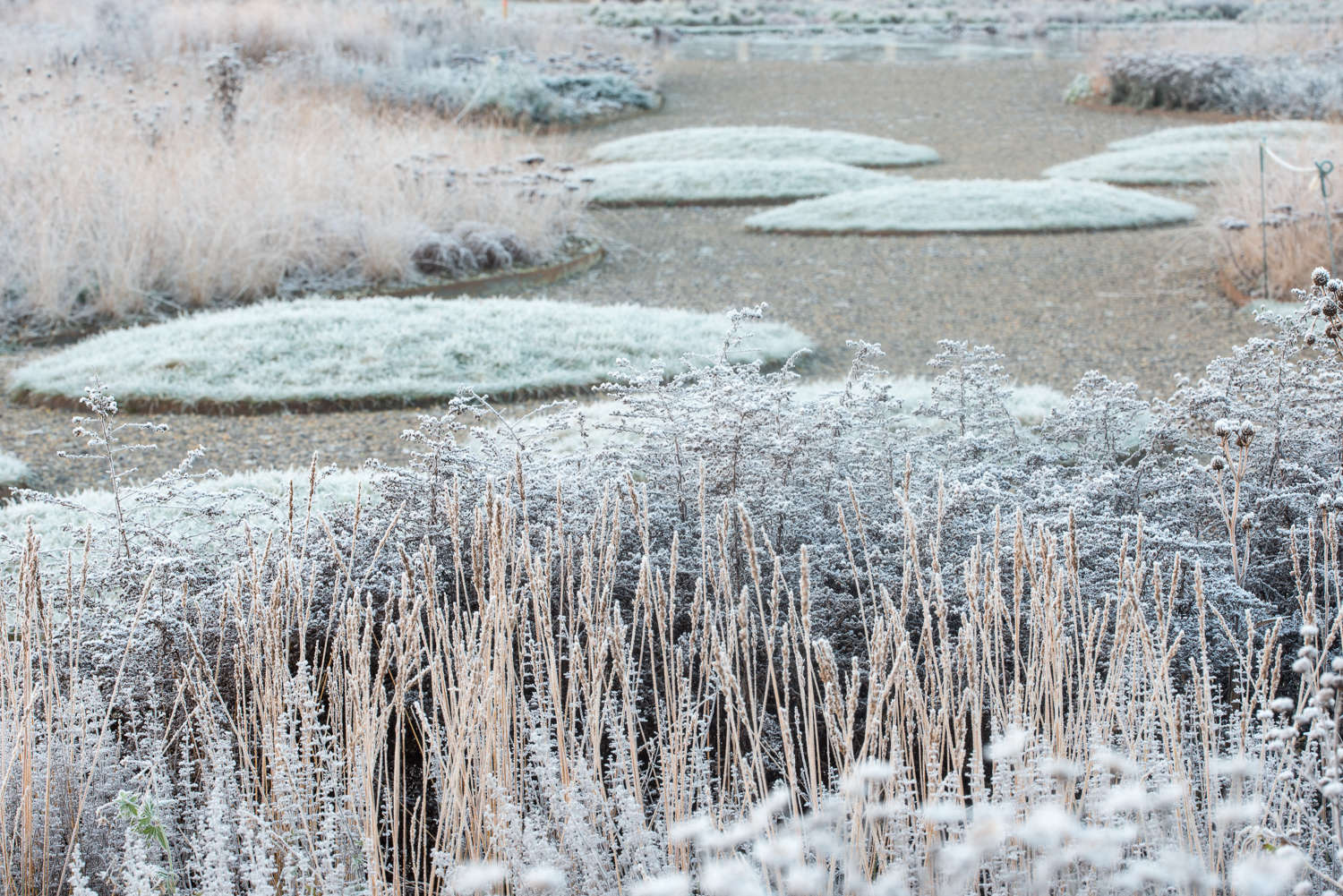When warm, balmy days give way to cool, crisp ones, I always plant flowers and perennials that bridge the seasons. And while many summer bloomers have passed their prime, others are still going strong. Yarrow is one of my favorites because it has long-lasting flowers, practically thrives on neglect, and is a favorite for pollinators. Here, I paired it with low-care grasses for a meadow-inspired combination that will look great into fall.
Photographs by Meredith Swinehart.

Above: I started with a 12-inch-square container–just the right size for my doorstep–made of a fiberstone, a material that’s much lighter than ceramic or terra cotta. I got this from one of my favorite nurseries, Dig Gardens in Santa Cruz, California; a similar Small Fiberstone Box is $85 from Jayson Home.
As I always do, I cut out a sturdy piece of paper that’s the same size as my pot’s opening (you can see examples of this in our previous Containers of the Month here and here). I use the paper as a template when I shop for plants so I know how much I can fit into the pot.

Above: Melinis nerviglumis, also known as Rhynchelytrum nerviglume or ruby grass, has thin, blue-green blades and fluffy pink flower plumes from summer through fall, though this young plant had no bloom stems when I bought it. Foliage takes on a reddish hue when the weather cools, and it’s evergreen in mild regions. Rhynchelytrum nerviglume ‘Savannah’ is $7.95 apiece at Morningsun Herb Farm.

Above: If roots are matted, gently tease them apart with your fingers. When plants are tightly rootbound, they generally don’t grow as well. Loosening the roots helps them spread so your plant can better reach water and nutrients in the surrounding soil.

Above: It’s always a good idea to fill your containers with purchased potting soil instead of digging up dirt from your garden beds since that may be too heavy or too light, depending on where you live. Bagged soil drains well and is packed with nutrients that container plants need.

Above: ‘Moonshine’ yarrow has golden umbrella-like blooms made up of dozens of tiny flowers. It’s a perennial that returns year after year, and it also comes in a range of other colors including white, terra cotta, pink, and red. High Country Gardens, one of my favorite online sources for drought tolerant plants, sells several varieties including a 5-inch pot of Achillea ‘Moonshine’ for $8.99.

Above: While I love yarrow blooms–which make great cut flowers–I’m also crazy about its blue-gray foliage.

Above: Carex ‘Amazon Mist’ is one of my go-to grasses because it pairs well with so many other plants, and it grows in a small, neat clump that looks beautifully delicate when spilling over the front of a pot. This carex has super thin blades that are pale green and silver on the undersides, giving it a shimmery look. It’s evergreen in areas with mild winters. An Amazon Mist Carex Plant is $5.20 from Garden Harvest Supply.

Above: Keep your container looking good by watering regularly (even though it’s cooler, plants still need consistent moisture) and feeding with an organic fertilizer such as Dr. Earth All Purpose Fertilizer (a 4-pound bag is $13.39 from Amazon). The grasses will grow year round in warmer climates, and after it gets cold enough for the yarrow to die down, you can either comb the carex over the bare spot or swap in another blooming plant from your local nursery.
For more container inspiration, check out Tough Beauties that Won’t Die, a Cool Palette for Hot Weather, and Pretty Enough to Eat.












Have a Question or Comment About This Post?
Join the conversation (0)